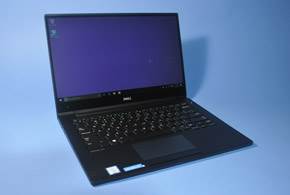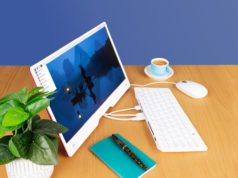REVIEW: Dell’s Latitude 13 ultrabook is minimalist in size and looks but not in functions, bringing together new features and security in a very thin computer.
Dell has the competition beat in terms of thickness and weight in the latest version of the Dell Latitude 13, model 7370 ultrabook. It’s the thinnest of any business laptop I’ve looked at lately, and it’s also the lightest.
The 7370 is so light partly because it has a 13-inch screen, so it’s a smaller computer. But it’s also a half-millimeter thinner than the HP EliteBook.
The result is a laptop that’s surprisingly compact. But for Dell to get its business laptop that thin, the company had to make some design compromises. The most obvious change is a move to USB-C “Thunderbolt” ports for communications.
There is one USB 3.0 port, but the other ports are more compact, including a Micro HDMI port for video, a Micro SD slot for memory cards and a Micro SIM tray for cellular communications. If you want some other means of connecting, you’ll need to use a docking station or a port replicator—of which Dell has a wide selection.
Because of the Latitude 13’s smaller screen size and the resulting smaller chassis size, the keyboard is also slightly smaller, but the difference isn’t as much as you might expect. Thanks to an efficient keyboard design, the width of the main typing surface on the Latitude 13 is only a quarter-inch smaller than the main typing surface of the HP EliteBook we also reviewed. The only obvious difference was the relocation of a row of subsidiary keys to a different location on the Latitude 13.
However, the quest for thinness has had an impact that has proved problematic. The height of the keys on the Latitude 13’s keyboard are the same as the top of the palm rest. The primary impact is on the space bar, which is now difficult to press while typing.
This was one of the reasons why I didn’t write the review of the Latitude 13 7370 on the machine itself, as I do with other laptops. However, I should also note that not everyone who I asked to try typing on this machine had the same problem I experienced with the keyboard.
But there was another reason: While I was using the machine, the Latitude crashed with the Blue Screen of Death—the very first of those I’ve seen on a Windows 10 machine. I contacted Dell’s support staff and I researched the cause on the company’s support site, and was led to download updated drivers for the Dell WD-15 Dock that I was using with the laptop.
Once the drivers were downloaded and installed, the machine took longer than an hour to reboot and the problem cleared. However, I didn’t want to risk losing the work I was doing, so I wrote this review on a different computer.







